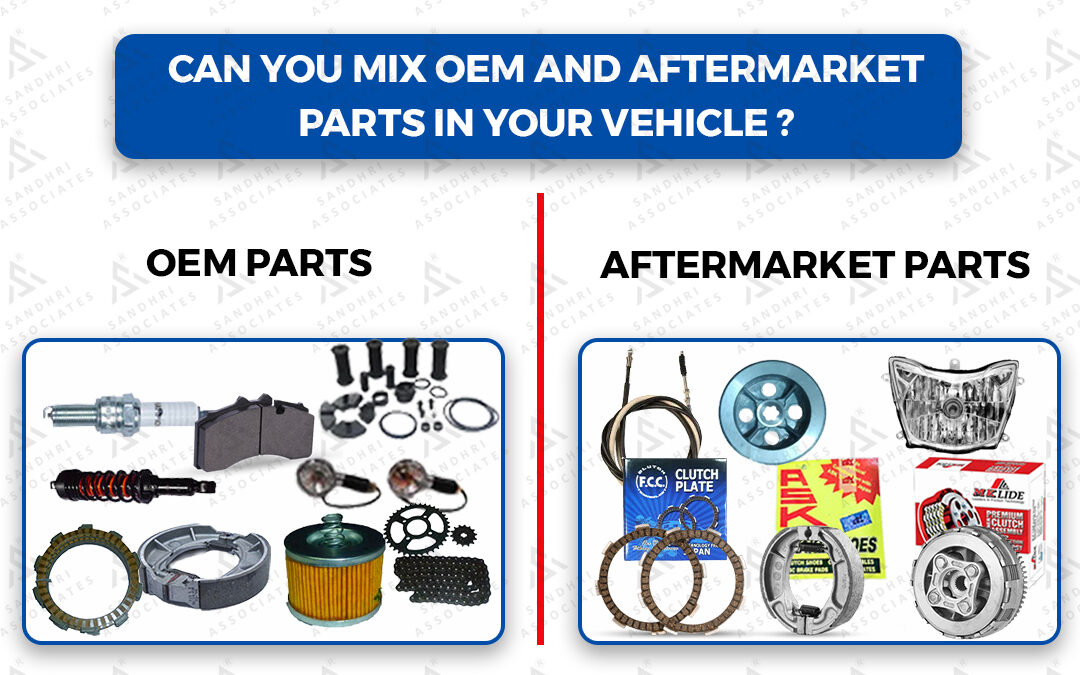Can You Mix OEM and Aftermarket Parts in Your Vehicle?
Brief overview of OEM vs. aftermarket parts.
Why this question is important for vehicle owners and enthusiasts.
Focus: Mixing parts responsibly for performance and safety.
Understanding the Basics of OEM and Aftermarket Parts
What Are OEM Parts?
OEM stands for Original Equipment Manufacturer. These parts are made by the same company that produced the original parts for your vehicle. They offer reliability, warranty coverage, and precise fit.
What Are Aftermarket Parts?
Aftermarket parts are made by third-party companies. They provide a wide range of options, including cost-effective solutions, variety, and innovative upgrades.
Why People Mix OEM and Aftermarket Parts
Cost savings is often the main reason for mixing OEM and aftermarket parts. Additionally, access to specialized or upgraded components can also drive vehicle owners to mix parts. Examples of mixing include using aftermarket tires and rims with OEM suspension components.
Critical Considerations When Mixing Parts
Compatibility
Ensure that both OEM and aftermarket parts are compatible for proper fit and function. Incompatibility can lead to performance issues.
Safety and Reliability
OEM parts are often preferred for critical systems such as brakes or airbags. Case studies show risks when aftermarket parts are incompatible with essential systems.
Warranty Concerns
Mixing parts may impact your vehicle warranty. Be sure to research your manufacturer’s guidelines before using aftermarket components.
Pros and Cons of Mixing OEM and Aftermarket Parts
Advantages
- Cost efficiency
- Performance upgrades
- Customization options
Disadvantages
- Potential compatibility issues
- Risk of uneven wear or suboptimal performance
Best Practices for Mixing OEM and Aftermarket Parts
- Consult with a trusted mechanic
- Research compatibility with your vehicle’s make and model
- Stick to OEM parts for critical systems
- Opt for reputable aftermarket brands
Examples of Mixing OEM and Aftermarket Parts
Commonly Mixed Parts
Examples include tires, rims, suspension components, and electronics like audio systems or GPS units.
When to Avoid Mixing
Avoid mixing critical components like airbags or brakes, as safety could be compromised.
Sandhri Associates’ Expertise in OEM and Aftermarket Parts
Sandhri Associates offers expert guidance on choosing the right parts for your vehicle. Professional installation services ensure optimal performance and safety.
Conclusion
In conclusion, mixing OEM and aftermarket parts can be beneficial for cost and performance. However, compatibility and safety are crucial. Always consult experts like Sandhri Associates for quality advice and service.
Contact Sandhri Associates today for expert advice and quality services.
FAQs
- What is the difference between OEM and aftermarket parts?
- Are aftermarket parts as reliable as OEM parts?
- Will using aftermarket parts void my car warranty?
- Can I mix OEM and aftermarket parts for performance upgrades?
- How do I know if an aftermarket part is compatible with my car?

